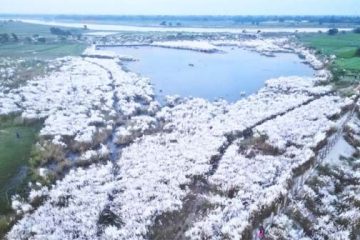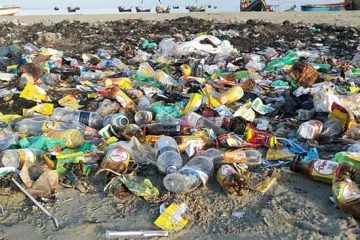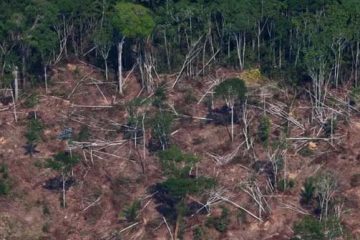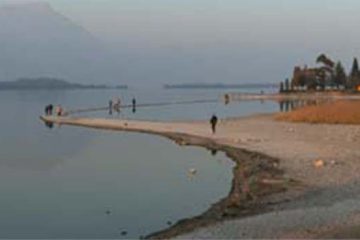Probir Kumar Sarker
 Over the recent years, Savar is experiencing immense pressure of new industrial, commercial and residential establishments. But most of these have already been done or
Over the recent years, Savar is experiencing immense pressure of new industrial, commercial and residential establishments. But most of these have already been done or
are underway indiscriminately haphazardly, and by violating the environmental laws and ignoring overall public convenience, not to speak of the care for future growth.
It has been a lucrative location for the industries because of its short distance from Dhaka. This and availability of communication facility also have prompted many
people working in the capital to set up their permanent residence in Savar. Meanwhile, utility services for residence and enterprises have been increasing in Savar–
new gas and electricity connections (though loadshedding is rampant), shopping centres, kitchen markets, roads and increased transport facilities.
Besides garments and other industries, Savar accommodates the highest number of conventional brick fields emitting black smoke into the air while the EPZ and other
localised industries still discharge waste water into the nearby waterbodies and low lands.
Polluted air contains excessive carbon monoxide, sulphur dioxide, nitrogen dioxide, ozone and particulate matter and leave short- and long-term impact on people’s
health, as well as the environment. People, mainly infants and pregnant women among the poor, are the most exposed to such pollutants.
In addition to this, pollutants from industrial waste include asbestos fibres, sulphur, lead, mercury, nitrates and phosphates. These lead to asbestosis, mesothelioma,
cancer in lung, intestinal and liver and depleting oxygen supply in water.
After the construction of Dhaka-Aricha and Dhaka-Tangail highways, all these establishments got a spree. Still there are hundreds of under-construction industries and
also hundreds others who have been operating in environmentally sensitive locations apparently unlawfully and defying public concern.
The lack of proper monitoring of the capital’s real estate regulator Rajdhani Unnayan Kartripakkha or Rajuk, the Department of Environment and relaxed mood of the
industries ministry, have been responsible for the unplanned growth and prevailing threat of severe contamination to canals and rivers, and of air pollution, besides
that are caused by dumping of solid waste, decreasing arable land and filling of low lands and waterbodies.
The current situation has not been created in a day or month. It has been ill-developed before the eyes of the government’s top policymakers and authorities concerned,
who let it go this way. But given the trend of urbanisation–growth of city-population, expansion of working area, extension of the capital and decentralisation of
industries from there — they should have planned the whole thing much before. Now it has become a prime concern for many including the locals as well as the
environmentalists: what about the future of the area?
Green groups demand that the government immediately check the establishment of hazardous industries beside the highways, waterbodies and agriculture lands; punish the
industries discharging waste water into the canals and rivers and encroaching of the rivers; halt throwing and dumping of waste haphazardly and curbing black smoke
emission from the brick fields and other industries.
Highly dense Savar Upazila under Dhaka district has an area of 280.13 sq km. It is bounded by Kaliakair and Gazipur Sadar upazilas on the north, Keraniganj Upazila on
the south, Mirpur, Mohammadpur, Pallabi and Uttara thanas of Dhaka on the east, Dhamrai and Singair upazilas on the west. Kaliakair and Gazipur, Dhamrai and Singair
have been developed much over the past decade thanks to the industrial establishments. Savar is competing with these areas in terms of new structures.
The southern part of the upazila is composed of the alluvial soil of the Bangshi and Dhalashwari rivers. Main rivers are Bangshi, Turag, Buriganga and Karnatali — all
facing severe pollution due to the unplanned growth.
At present, a number of mega housing projects are underway in Hemayetpur, Bank Town, Savar Bazar, Nabinagar and Ashulia areas, while many others have already been set
up. But the people who are going to be added to the existing population may experience much degraded air quality, darker water in the canals and rivers and water
clogging on streets and compounds since there have been no concrete measure underway by the government’s wings entitled to ensure a planned housing in a congenial
environment.
The authorities concerned, mainly the DoE, appear indifferent or helpless. The officials admit that they cannot deter economic advancement roughly by undertaking
series of enforcement drives to demolish or order shifting of industries polluting the environment.
Like the other suburbs around the capital–Gazipur and Narayanganj–Savar is also under the jurisdiction of Rajuk, but allegedly because of manpower shortage it cannot
operate as much it is necessary for Savar. Neither the DoE, nor Rajuk has their branch offices in the economically significant area.
The number of brick kilns operating near Aminbazar, beside Dhaka-Aricha highway, and in Ashulia, on the bank of Turag River and in the middle of agriculture lands,
proves the government’s indifference or weakness. Most of these brick fields also use firewood when use of coal is mandatory for them.
Moreover, the industries in DEPZ are yet to have a central effluent treatment plant (ETP) to ensure discharge of harmless water while the individual factories set up
here and there either don’t have ETPs or keeping those dysfunctional most of the time to save money. Dumping of industrial solid waste is also severely polluting the
environment of the surrounding areas.
Environmentalists also stress the need for comprehensive and visionary plans so that the tannery estate in Hemayetpur which is set to open in two years do not again
become the reason of polluting Dholeshwary and Buriganga rivers as the tanneries have been doing in the capital’s Hazaribagh area.
Admitting all shortcomings and compulsions, the question remains: Without checking the prevailing miserable state of the environment in Savar area, how the newcomers
here in the under-construction residential areas and industries will survive and remain healthy?
The writer is a journalist. He can be contacted through probirbidhan@gmail.com.
Article originally published on The Daily Star





